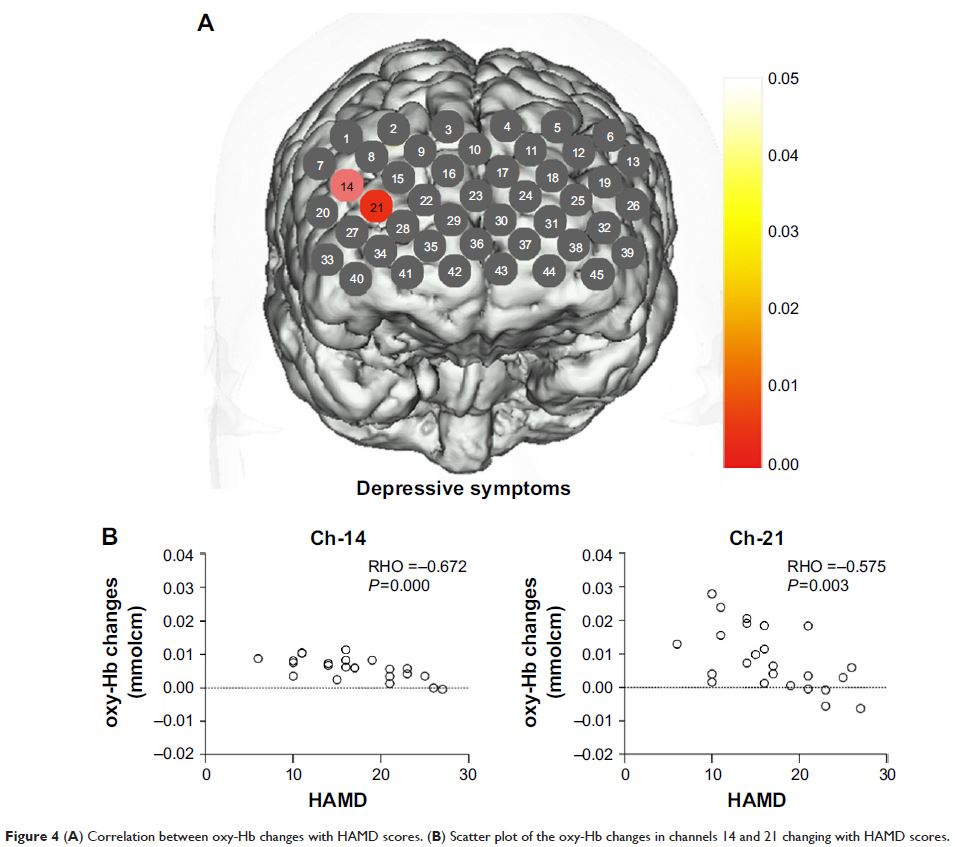9 0 5 7 8
论文已发表
注册即可获取德孚的最新动态
IF 收录期刊
- 2.6 Breast Cancer (Dove Med Press)
- 3.9 Clin Epidemiol
- 3.3 Cancer Manag Res
- 3.9 Infect Drug Resist
- 3.6 Clin Interv Aging
- 4.8 Drug Des Dev Ther
- 2.8 Int J Chronic Obstr
- 8.0 Int J Nanomed
- 2.3 Int J Women's Health
- 3.2 Neuropsych Dis Treat
- 4.0 OncoTargets Ther
- 2.2 Patient Prefer Adher
- 2.8 Ther Clin Risk Manag
- 2.7 J Pain Res
- 3.3 Diabet Metab Synd Ob
- 4.3 Psychol Res Behav Ma
- 3.4 Nat Sci Sleep
- 1.9 Pharmgenomics Pers Med
- 3.5 Risk Manag Healthc Policy
- 4.5 J Inflamm Res
- 2.3 Int J Gen Med
- 4.1 J Hepatocell Carcinoma
- 3.2 J Asthma Allergy
- 2.3 Clin Cosmet Investig Dermatol
- 3.3 J Multidiscip Healthc

慢性失眠症语言流畅矫正期间前额叶激活的降低:多通道近红外光谱研究
Authors Sun JJ, Liu XM, Shen CY, Zhang XQ, Sun GX, Feng K, Xu B, Ren XJ, Ma XY, Liu PZ
Received 11 March 2017
Accepted for publication 31 May 2017
Published 30 June 2017 Volume 2017:13 Pages 1723—1731
DOI https://doi.org/10.2147/NDT.S136774
Checked for plagiarism Yes
Review by Single-blind
Peer reviewers approved by Dr Colin Mak
Peer reviewer comments 3
Editor who approved publication: Professor Wai Kwong Tang
Purpose: Daytime complaints such as memory and attention deficits and
failure to accomplish daily tasks are common in insomnia patients. However,
objective psychological tests to detect cognitive impairment are equivocal.
Neural function associated with cognitive performance may explain the
discrepancy. The aim of this study was to investigate the hemodynamic response
patterns of patients with chronic insomnia disorder (CID) using the noninvasive
and low-cost functional neuroimaging technique of multichannel near-infrared
spectroscopy (NIRS) in order to identify changes of neural function associated
with cognitive performance.
Patients and
methods: Twenty-four CID patients and
twenty-five healthy controls matched for age, right-hand dominance, educational
level, and gender were examined during verbal fluency tasks (VFT) using NIRS. A
covariance analysis was conducted to analyze differences of oxygenated
hemoglobin (oxy-Hb) changes in prefrontal cortex (PFC) between the two groups
and reduce the influence of the severity of depression. Pearson correlation
coeffcients were calculated to examine the relationship between the oxy-Hb
changes, with the severity of insomnia and depressive symptoms assessed by the
Pittsburgh Sleep Quality Index (PSQI) and the Hamilton Rating Scale for
Depression (HAMD).
Results: The number of words generated during the VFT in CID groups showed no
statistical differences with healthy controls. CID patients showed
hypoactivation in the PFC during the cognitive task. In addition, we found that
the function of left orbitofrontal cortex (OFC) during the VFT was
significantly negatively correlated with the PSQI scores and the function of
right dorsolateral PFC (DLPFC) was significantly negatively correlated with the
HAMD scores.
Conclusion: The present study detected dysfunctions in PFC in spite of intact
performance which indicates the role of PFC in the neurophysiological
underpinnings. Left OFC function is associated with insomnia symptoms and right
DLPFC function is associated with depressive symptoms.
Keywords: chronic insomnia disorder, near-infrared spectroscopy, NIRS, prefrontal
cortex, verbal fluency task, depressive symptoms
